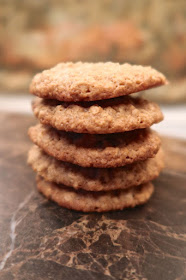
One of my favourite Chicken Curry recipes, a classic Punjabi dish from Northern India — Murgh Kari — was inspired by a small spiral-bound copy of Time-Life 'Foods of the World: The Cooking of India' cookbook that I permanently borrowed from my Mom's food library many years ago. A popular series of 27 cookbooks published by Time-Life from 1968 through to the early 70s, the cookbooks provided a broad survey of many of the world's major cuisines, and quite possibly lit the first spark that ignited my lifetime love affair with food history. The individual volumes were written by well-known experts on the various cuisines, including renowned food writers such as Craig Claiborne, Pierre Franey, James Beard, Julia Child, M.F.K. Fisher and Santha Rama Rau, the Indian author and journalist to wrote 'Cooking of India'. The series combined recipes with wonderful food-themed travelogues to show the cultural context from which each recipe sprang, with each volume coming in two parts: the main book was a large hardcover book with lots of lovely photos, while the recipes were presented in small spiral-bound booklets.

My treasured and well worn 'The Cooking of India' cookbook from the 'Time-Life' Foods of the World series which was published in the late 60s and early 70s
Quick, easy and delicious, this Chicken Curry recipe is also light, flavourful and can be made an hour or two before dinner, then allow to simmer on low heat until you're ready. I often use chicken breasts as a lower fat option, but chicken thighs work equally well. Browned briefly in a little oil, the chicken pieces are cooked for just a few minutes then set aside while the sauce is prepared. Chopped onion, ginger and garlic are sautéed over high heat for about 8 minutes until the onions are golden brown, the heat is reduced to low and the spices are added: cumin, turmeric, ground coriander, fennel and 1 tablespoon of water, then cooked for a minute or so, stirring constantly. A can of drained chopped tomatoes, plain yogurt, chopped fresh cilantro and the browned chicken pieces are added to the sauce, then covered and simmered for at least 20-30 minutes, although I often let it cook up to 60-90 minutes will excellent results — the chicken just ends up breaking up into the sauce a little more. Served with basmati rice, papadam and a few mini samosas, this Chicken Curry is one of my favourite 'go-to' recipes. Foolproof and guaranteed delicious.
Murgh Kari Chicken Curry
Serves 4
Recipe courtesy of Time-Life 'The Cooking of India'
1 1/2 lb chicken breasts, boneless and skinless
2 1/2 tsp salt
6 tbsp vegetable, or olive oil
6 oz finely chopped onion, about 1 medium onion
2 1/2 tsp chopped garlic
1 1/2 tsp chopped ginger
1 tsp ground cumin
1 tsp turmeric
1 tsp ground coriander
1 tsp cayenne pepper
1/4 tsp ground fennel seeds
6 tbsp water
1 lb can whole tomatoes, drained and chopped
3 tbsp chopped fresh cilantro, plus extra for garnish
6 tbsp plain Greek yogurt
Cut up the chicken breasts into quaters, pat dry and sprinkle with salt. Heat the oil over high heat in a large skillet, until water flicked into it splutters instantly. Add the chicken and cook for 3-4 minutes on each side, until each piece is white and fairly firm. Transfer the chicken to plate. When cool enough to handle, tear up into smaller pieces.
Add the onions, garlic and ginger to the oil remaining in the pan and sauté for about 8-10 minutes, stirring constantly, until the onions are soft and golden brown. Reduce the heat to low, add the cumin, turmeric, ground coriander, fennel and 1 tablespoon of water, and cook for a minute or so, stirring constantly. Stir in the tomatoes, 1 tablespoon of fresh cilantro, the yogurt and the remaining teaspoon of salt.
Increase the heat to medium and add the chicken plus any juices that have accumulated on the plate. Pour in the rest of the water. Bring to a boil, turning the chicken over in the sauce to coat the pieces evenly. Sprinkle the top with garam masala and the rest of the fresh cilantro. Reduce the heat to low, cover tightly, and simmer for about 20 minutes, until the chicken is tender but not falling apart. I often extend the cooking time up to 60-90 minutes with great results. The chicken just ends up breaking up a bit more.
To serve, arrange the chicken attractively on a heated dish, pour the remaining sauce over top, and sprinkle with chopped cilantro. I usually accompany the Chicken Curry with steamed basmati rice, crisp papadum and warm naan.























